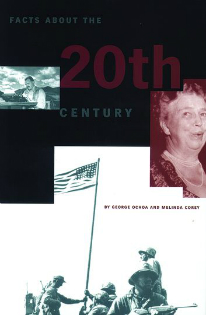
"Perfect for trivia buffs or scholars seeking facts; a highly recommended staple for public libraries and American history collections."
- Library Journal
Famous First Facts
Hardcover |
- Description
- Related Products
Famous First Facts informs and entertains with over 9,000 fascinating “firsts” in history.
Last published 10 years ago, this new update is filled with new information and key facts from 2015 to present day.
For more than half a century, Famous First Facts has earned the accolades of reviewers and a place on library reference shelves nationwide. This new edition of the reference classic is updated and expanded with new entries reflecting the latest developments and discoveries, and newly organized for easier access to information.
The eighth edition includes more than 9,000 entries- scientific, technological, and medical advances, political and legal firsts, and significant social and financial milestones - with more than 200 illustrations, and four indexes to assist readers in locating information. Fields are updated with new information and key facts from 2015 to 2025:
- Updates of existing entries based on new developments and discoveries from the last 10 years.
- Hundred of images of the individuals, inventions, and moments that are new firsts.
- New sidebars highlighting history-changing firsts and other information of particular interest.
- Covers firsts from 10,000 B.C., the date of the earliest human artifacts found in America to 2025.
- A main subject index, plus geographical, name, and year indexes, offer researchers direct access to every included fact.
A Famous First Facts Sampler:
The first general anesthetic was sulfuric ether, used by Dr.Crawford Williamson Long of Jefferson, GA, in December 1841. On March 30, 1842, he removed a cystic tumor about half an inch in diameter from the back of the neck of James M. Venable, applying ether under a towel. His bill for the operation amounted to $2.25: for sulfuric ether 25 cents and for excising the tumor $2. The discovery was not reported, however, until 1852, when the Georgia State Medical Society was notified.
The first war that was predicted by pizza orders was Operation Desert Storm, which was launched on Wednesday, January 16, 1991, by a United Nations coalition led by the United States. At 5 A.M. that morning, the Domino's Pizza fast-food chain put out a warning to its franchisees that war was likely later that day, based on record orders of pizza the previous night from the Pentagon. The Pentagon is the headquarters of the Department of Defense in Washington, D.C.
The first endangered species to be clonedwas the gaur, a wild ox from Asia. On January 8, 2001, a male baby gaur was born to a cow that had served as his surrogate mother. He had been cloned by scientists led by Philip Damiani at Advanced Cell Technologies, Worcester, MA. The calf died of a bacterial infection two days after birth.
The first known selfie is considered to be a daguerreotype taken by Robert Cornelius of himself in October 1839 in his family's lamp and chandelier store in Philadelphia, PA. A daguerreotype is an early kind of photographic process that uses an iodine-sensitized silvered plate and mercury vapor to produce an image. To take his self-portrait, Cornelius had to sit for between 3 and 15 minutes to complete the necessary exposure time.
Filled with more than 1,000 new firsts, Famous First Facts is perfect for trivia buffs, students, scholars, librarians or anyone searching for an entertaining, informative source. This new edition of the reference classic is updated and expanded with new entries reflecting the latest developments and discoveries, and newly organized for easier access to information.





